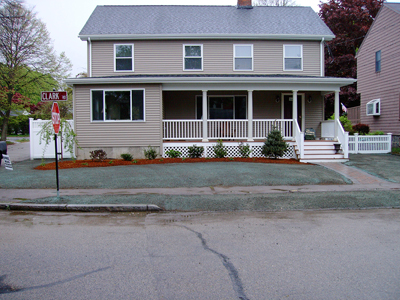Assess Your Property
The foundation of a thriving, long-lasting outdoor space begins with a thorough assessment of your property. Examine your site conditions, including the topography, soil composition, drainage patterns, and existing vegetation. Understanding variations in sun exposure, wind, and moisture creates a map of which plants and materials will thrive in each location. For tailored guidance and professional execution, partnering with a specialist in landscape construction Avon, MA, ensures your vision is structurally sound and suited to your local environment.
Identifying the microclimates on your property helps you place the right elements for maximum growth and resilience. Take note of shaded vs. sunny areas, regions prone to collecting water, or zones sheltered from wind. This groundwork enables more informed choices throughout your landscape’s design and development.
Define Functional Zones
Successful landscapes are often structured around specific zones dedicated to various functions. Whether you want a cozy nook for reading, a patio for gatherings, a vegetable garden, or a safe children’s play area, delineating spaces ensures efficient use of every square foot. Creative boundaries using hedges, plant beds, or path layouts can separate spaces while encouraging natural flow.
Consider family lifestyle, frequency of entertaining, pet needs, or the inclusion of outdoor utilities. Functional zoning increases usability and comfort, making your landscape a true extension of your home. Creating outdoor spaces that serve multiple purposes adds long-term value and flexibility as your needs change.
Select Appropriate Plants
Choosing plants well-suited to your climate and property conditions saves on maintenance and creates a healthier, more sustainable landscape. Favoring native and drought-tolerant varieties reduces water consumption and attracts local wildlife, while also lowering the risk of pest and disease problems. Layer heights and textures for depth and interest, and blend perennials, shrubs, and groundcovers for a lush, multi-dimensional setting.
Understand the timing and requirements of your chosen plants. Map out bloom periods and foliage changes to guarantee color and vibrancy regardless of season. Selecting low-maintenance cultivars lets you dedicate more time to enjoyment rather than upkeep.
Incorporate Sustainable Practices
Modern landscapes benefit from practices that are as gentle on the planet as they are enduring. Organic soil amendment and mulching conserve moisture, suppress weeds, and boost plant vitality. Composting kitchen and yard waste reduces landfill loads and renews your landscape organically.
Efficient irrigation, such as drip systems with moisture sensors, minimizes waste and supports plant health by delivering water when it is truly needed. Sustainability in landscape choices protects your investment while reducing your project’s environmental footprint.
Plan for Year-Round Interest
Combine evergreen structure, spring bulbs, summer blooms, and autumn foliage for a landscape that captivates in every season. Evergreens maintain form and privacy through winter, while flowering trees and shrubs announce spring. Mix perennials and ornamental grasses for vibrant color in summer and lasting seed heads or foliage in fall and winter.
Thoughtful planning will engage your garden with dynamic textures, scents, and views throughout the year, providing continual enjoyment and curb appeal.
Integrate Hardscape Elements
Hardscape features—pathways, patios, retaining walls, decks, or water—impart structure and usability to your yard. When choosing materials, match durability with your style for patios and walkways, and opt for locally sourced stone, wood, or recycled composites when available. Fountains and ponds enhance tranquility and biodiversity, while firepits and pergolas invite year-round outdoor living.
Integrating hardscaping as a central or subtle aspect ensures your landscape is practical and inviting, supporting your defined functional zones.
Embrace Technological Advancements
Smart technology simplifies maintenance and increases your landscape’s adaptability. Automated irrigation systems adjust watering based on weather and soil data, saving water and maintaining plant vigor. Using landscape design software or mobile apps enables accurate planning, quick adjustments, and clear visualizations for projects big and small. Technology bridges the gap between sophisticated design and everyday usability, making it easier to care for your outdoor spaces as they evolve.
Plan for Future Adaptations
The most successful landscapes anticipate future needs. They incorporate flexible, modular elements—like movable planters, multi-use spaces, or adjustable borders—that can be reconfigured as family dynamics, interests, or accessibility needs shift. Designing with a long-term vision means your investment adapts with you, maintaining functionality and appeal across the years.
A thoughtful landscape design balances immediate goals with the flexibility to accommodate change, ensuring lasting satisfaction and value.
By assessing your property, creating functional zones, and anchoring your design with appropriate plants, sustainable practices, and resilient structures, you build a thriving outdoor environment. Integrating technology and futureproof design prepares your landscape to grow beautifully, no matter how your needs change.

